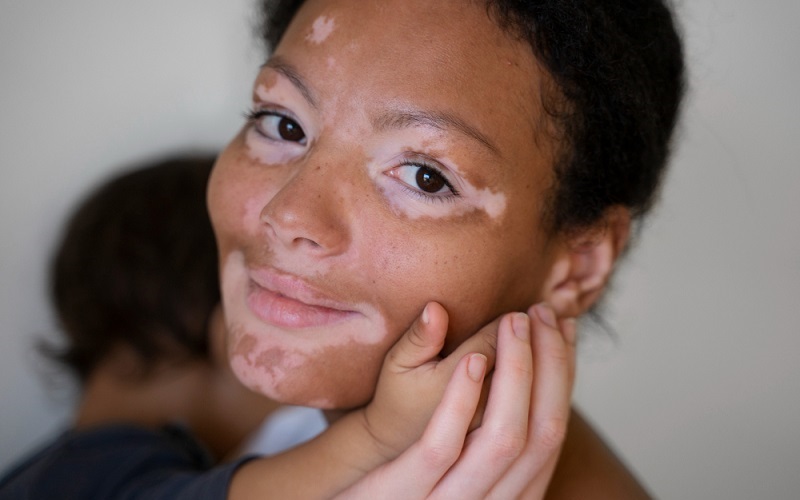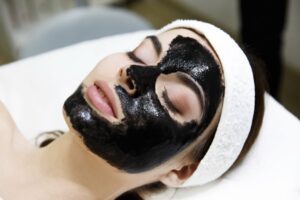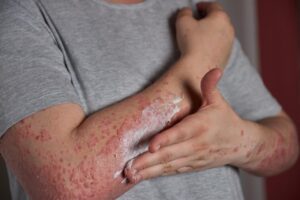
June is considered as vitiligo awareness month and June 25th is observed as World Vitiligo Day. It was established to raise awareness for vitiligo.The 25th of June was selected in remembrance of Michael Jackson, who suffered from vitiligo and died on that day in 2009.
The vision is to bring the forgotten disease into the public eye by raising the awareness, potraying its true nature and debunking the common vitiligo myths. The theme for the world vitiligo day 2021 is ‘Embracing life with vitiligo’
Few famous people with vitiligo: Michel Jackson (The King of Pop), Amitabh Bachchan(Indian film actor), Chandrababu Naidu (Former Chief Minister of Andhra Pradesh), Gautam Singhania (Managing Director of the Raymond Group), Holly Marie Combs (American actress and television producer), Winnie Harlow (Canadian fashion model), Rasheed Wallace (An American former professional basketball player), Tamar Braxton (R&B singer and over-the-top personality on ‘Braxton Family Values’), Joe Rogan (comedian, TV commentator, film screenwriter and producer), Sisqo (American singer-songwriter), Richard Hammond (A British presenter, radio host, writer and journalist), Thomas Lennon (actor, comedian, screenwriter and director)
Vitiligo is classified as an autoimmune disorder, in which the body’s immune system attacks its own cells or organs. It causes white spots on the skin due to loss of pigment cells called melanocytes. The hair from the skin may also become white. The discoloured areas usually get bigger with time. Up to 1% of the world’s population is affected by vitiligo. It can affect people of any age, gender or ethnic group. But it is more common in dark skinned people. It is usually seen in people between the ages of 20 and 30.
Symptoms:
- Patchy loss of skin colour
- Whitening or graying of the hair
- Loss of colour of the tissues
Early symptoms of vitiligo include:
- Premature graying of hair on the scalp or eyebrows.
- Loss of colour on the inside of the mouth
- Change in colour of the eye’s retina.
Management: There is no cure, but there are treatments for vitiligo that can be prescribed by a dermatologist. Cosmetics such as makeup and self-tanner can be used in order to make one’s vitiligo less visible.
Topical medicines can be prescribed for small areas of depigmentation that will add color to the skin. There are also light treatments, in which patients sit in a lightbox (for widespread vitiligo) or receive excimer laser treatments (for small patches) 2-3 times a week for several weeks. PUVA light therapy is a more intensive form of this treatment. Lastly, there are surgical options if conservative methods do not work, in which skin with your natural colour is removed and placed where colour is needed.
DEBUNKING VITILIGO MYTHS
MYTH 1
Vitiligo is a punishment for wrong doing, or something called past karma.
FACT
- Notions like these arise from fear or a lack of understanding of the disease.
- Vitiligo caused by loss of melanin due to autoimmune disease. When no pigment is produced, the skin in that area becomes white in colour and totally unrelated to one’s behaviour.
MYTH 2
- Vitiligo is aggravated by consuming milk or other white foods, sour foods such citrus fruits (lemons, limes and oranges) and drinking milk shortly after eating fish.
FACT
- Vitiligo is an auto-immune disease which has no direct relation to food.
MYTH 3
- Those affected by vitiligo are intellectually disabled or their bodies are unhealthy and dysfunctional.
FACT
- Vitiligo is not associated with the degree of one’s intelligence or functioning of any other part of the body.
MYTH 4
- Vitiligo is contagious.
FACT
- Vitiligo is not contagious, and it cannot be passed through contact. It cannot be transmitted via touch, saliva, blood, inhalation, sexual intercourse or the sharing of personal items (i.e. drink bottle, towels, etc).
MYTH 5
- Vitiligo is related to other skin disorders such as albinism, skin cancer or leprosy.
FACT
- There are clear distinctions between each of them. Individuals with albinism are born with little or no melanin, whereas vitiligo onset occurs when melanocytes are damaged.
- Vitiligo it is not a type of cancer
- Leprosy is an infectious disease that causes nerve damage which can lead to weakness and gradual loss of function.
- Vitiligo, on the other hand, does not cause any physical impairment.
Myth 6
- If you marry a person with vitiligo you will contract vitiligo and your kids will be born with vitiligo
FACT
- Fact Vitiligo is not contagious. You can marry a person with vitiligo. Child born to a parent with Vitiligo will not be born with white patches.
- The chances of a child developing vitiligo is 5 to 10% if a parent has vitiligo.







